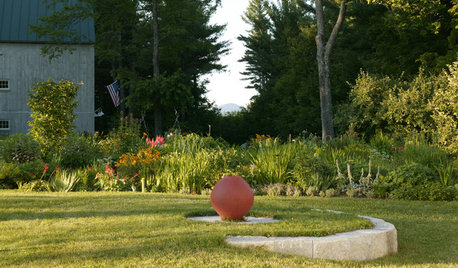What do you do when you receive a Virused plant?
g-in-fl
11 years ago
Related Stories

GARDENING GUIDESWhen and How to Plant a Tree, and Why You Should
Trees add beauty while benefiting the environment. Learn the right way to plant one
Full Story
CONTRACTOR TIPSBuilding Permits: When a Permit Is Required and When It's Not
In this article, the first in a series exploring permit processes and requirements, learn why and when you might need one
Full Story
LANDSCAPE DESIGNWhen Less Is Really More in Your Garden
8 ways you can make a powerful garden statement by embracing simplicity and surroundings
Full Story
LIFEWhen You're Suddenly Solo at Home
Whether you stay in a home alone or move on, these strategies from professional organizers can help you with the process
Full Story
MOST POPULARWhen Does a House Become a Home?
Getting settled can take more than arranging all your stuff. Discover how to make a real connection with where you live
Full Story
SELLING YOUR HOUSEHow to Decorate for the Holidays When Your Home Is for Sale
You can make your home appealing to potential buyers and still celebrate the season. Here are 7 tips to keep in mind
Full Story
DECORATING GUIDESColor Feast: When to Use Purple in the Dining Room
Decadent and different, purples from lavender to plum can make a dining area a treat for the eyes
Full Story
EXTERIOR COLORWhen to Paint Your Home Yellow
Be a cheer leader with this color that captures the sun and radiates a warm welcome
Full Story
REMODELING GUIDES5 Ways to Protect Yourself When Buying a Fixer-Upper
Hidden hazards can derail your dream of scoring a great deal. Before you plunk down any cash, sit down with this
Full Story
DECORATING GUIDESHow to Decorate When You're Starting Out or Starting Over
No need to feel overwhelmed. Our step-by-step decorating guide can help you put together a home look you'll love
Full Story






User
cath41
Related Discussions
Do you take precautions when visiting nuseries? What do you do?
Q
When you buy new plants, do you stick with what you know
Q
When treating nutrient defficiency plants, what do you do?
Q
What do you wish you had NEVER planted? & Which plants do you love?
Q
roseseek
Kippy
jerijen
roseseek
jerijen
roseseek
jerijen
malcolm_manners
Kippy
malcolm_manners
Kippy
jerijen
seil zone 6b MI
malcolm_manners
henry_kuska
malcolm_manners
jerijen
henry_kuska
malcolm_manners
henry_kuska
malcolm_manners
seil zone 6b MI
jerijen
roseseek
seil zone 6b MI
jerijen
henry_kuska
Kippy
User
AquaEyes 7a NJ
Terry Crawford
henry_kuska
Terry Crawford
AquaEyes 7a NJ
malcolm_manners
henry_kuska
jerijen
henry_kuska
AquaEyes 7a NJ
kittymoonbeam
roseseek
henry_kuska
flaurabunda
jerijen
Terry Crawford
roseseek
Terry Crawford
kittymoonbeam